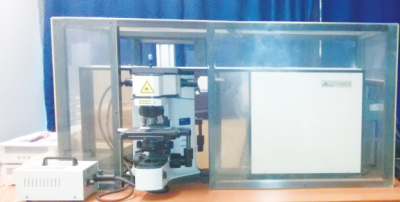Laser Raman Spectrometer

Booking Link
Description
Laser Raman Spectroscopy facility is used for charactertization of solid and liquid samples (Inorganic as well as organic) and also study their structural, and optical properties. It uses the principle of inelastisc scattering of visible radiation by different different excitations in the material.
Make and Model
Horiba Jobin Yovon, France, Labram HR800 UV
Faculty in-charge
Contact Email
lrs@iitb.ac.in
Location
Room No.: 208A, First floor, Centre for Center for Research in Nano Technology and Science building.
Contact No: 022-25767654
